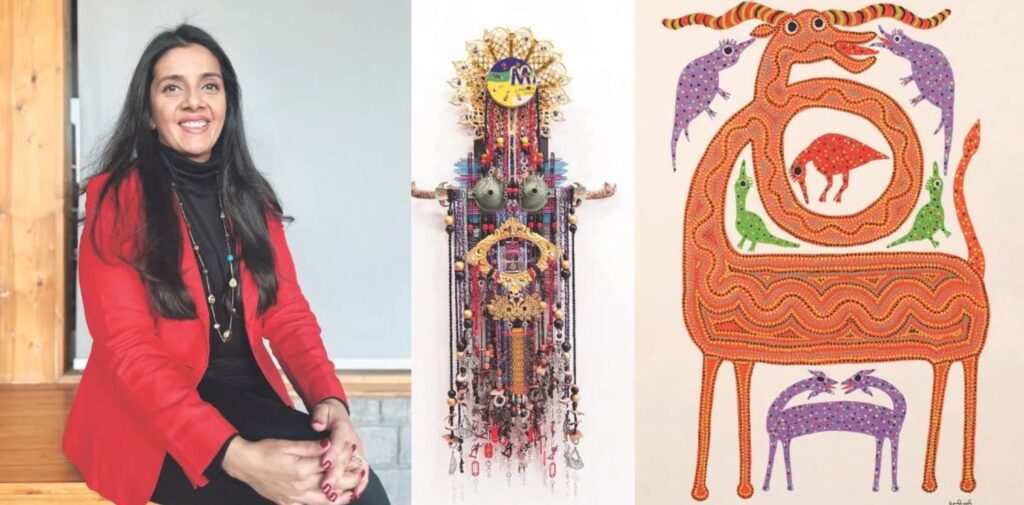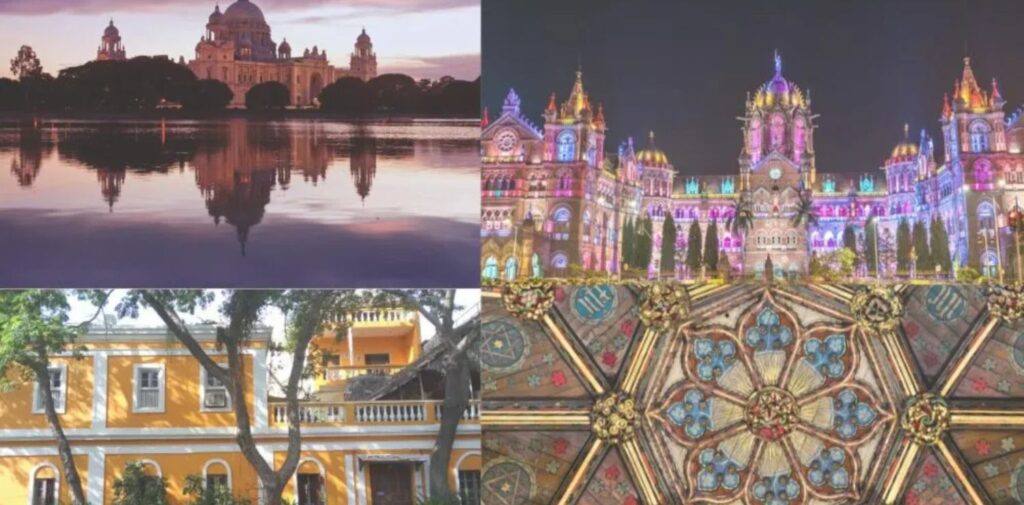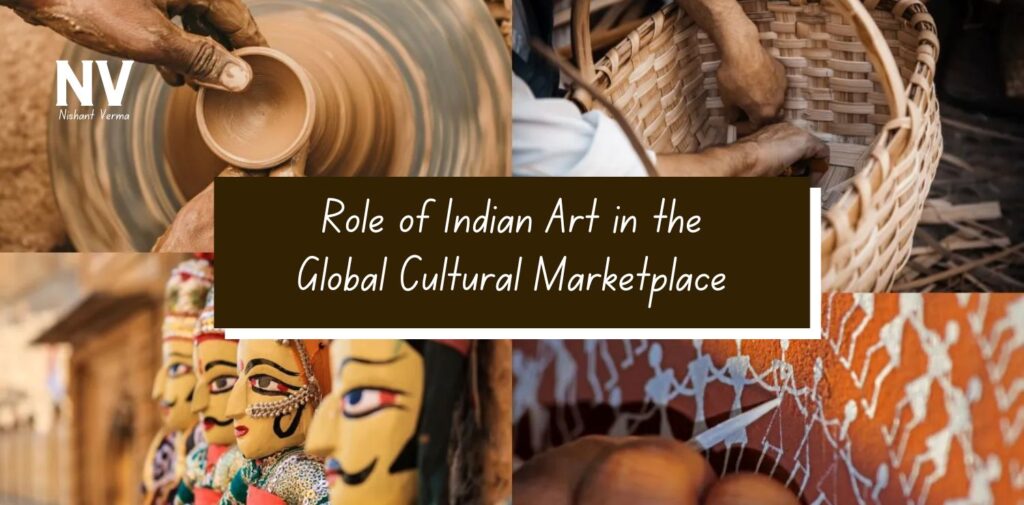Indian art has always been deeply rooted in the country’s rich history and diverse cultural traditions. Over the years, Indian art has evolved, from ancient cave paintings and temple sculptures to contemporary art forms that are gaining global recognition. Today, Indian art has carved a prominent place in the global cultural marketplace, where it is not just a symbol of India’s heritage but also a dynamic and evolving force in the world of art. This article will explore the role of Indian art in the global cultural marketplace and how it influences and is influenced by the world around it.
The Rich Tradition of Indian Art
Indian art has a long and varied history that dates back thousands of years. It is a reflection of the country’s vast cultural diversity, religious influences, and regional traditions. From the ancient Indus Valley civilization’s intricate seals and pottery to the ornate sculptures in Hindu temples, Indian art has always been an expression of spirituality, nature, and human experiences. The traditional art forms such as Madhubani, Warli, Pattachitra, and Tanjore painting have been passed down through generations, often telling stories from Indian mythology, history, and everyday life.
In addition to these visual art forms, India’s architectural contributions, including the grandeur of the Taj Mahal, the intricate carvings of temples, and the stunning Mughal gardens, have made a significant mark on the global art scene. Indian art’s deep connection to spirituality, philosophy, and the natural world has made it an enduring force in both the local and international cultural landscape.

Contemporary Indian Art and Its Global Appeal
In recent decades, Indian contemporary art has gained increasing attention on the global stage. Contemporary Indian artists have found ways to blend traditional techniques with modern ideas, creating a unique fusion that appeals to art lovers worldwide. Artists such as M.F. Husain, Tyeb Mehta, and Anish Kapoor have helped bring Indian art to the forefront of the international art scene. These artists are known for their distinctive styles and innovative approaches, which often address social, political, and cultural issues.
The global appeal of contemporary Indian art is evident in the growing number of Indian art exhibitions, auctions, and galleries in major cities like New York, London, and Paris. Indian artists are now regularly featured in international art fairs like Art Basel, the Venice Biennale, and the Dubai Art Fair. The art market is also witnessing an increasing demand for Indian artwork, with Indian artists commanding high prices at auction houses such as Christie’s and Sotheby’s.
Contemporary Indian art is also notable for its ability to blend Western and Eastern influences. Many Indian artists draw inspiration from global art movements like abstract expressionism, pop art, and conceptual art, while still maintaining a strong connection to their Indian roots. This fusion of styles has helped Indian art resonate with a diverse international audience.
Indian Art in the Global Art Market
The global art market has seen a growing interest in Indian art, especially in recent years. Auction houses around the world have witnessed a surge in demand for Indian paintings, sculptures, and modern art. For instance, the works of artists like Raja Ravi Varma, Amrita Sher-Gil, and Bhupen Khakhar have attracted significant attention from collectors and investors worldwide.
One of the key drivers behind the increasing popularity of Indian art in the global market is the expanding middle class in India and the growing presence of Indian collectors and investors in the international art scene. As India’s economy has grown, so has its cultural influence, and more Indian collectors are seeking to showcase works by Indian artists in their personal collections.
In addition to traditional art forms, contemporary Indian art has found a prominent place in the global art market. The sale of works by contemporary Indian artists at international auctions has broken records in recent years. The increased visibility of Indian art in major art hubs, including London, New York, and Hong Kong, has positioned Indian art as a significant player in the global art economy.

Art as a Medium of Cultural Diplomacy
Indian art has also played a role in cultural diplomacy, serving as a bridge between India and other countries. The government of India, through initiatives like the Indian Council for Cultural Relations (ICCR), has actively promoted Indian art and culture abroad. Exhibitions, performances, and collaborations with international institutions have helped showcase Indian art to global audiences and foster mutual understanding.
Art exhibitions and cultural festivals often serve as a platform for showcasing the diversity of Indian artistic traditions, from classical dance forms like Bharatanatyam and Kathak to the intricate art of Indian miniature painting. These events provide an opportunity for people from different cultures to engage with Indian art, fostering cross-cultural dialogue and collaboration.
India’s participation in international art festivals like the Venice Biennale and the Sharjah Biennale has also enhanced its cultural footprint on the global stage. By showcasing contemporary Indian art in these prestigious international venues, India is able to engage with the world’s top artists, critics, and curators, thus establishing itself as a significant cultural player.
The Digital Revolution and Indian Art’s Global Presence
The advent of digital platforms and social media has transformed the way Indian art is shared and consumed. Online platforms such as Instagram, Pinterest, and YouTube have allowed Indian artists to showcase their work to a global audience, bypassing the traditional barriers of galleries and physical exhibitions. This has democratized access to Indian art and made it easier for art lovers and collectors worldwide to discover and purchase Indian artwork.
Digital platforms have also given rise to a new generation of Indian artists who are using technology to create innovative and interactive art forms. Digital art, video installations, and virtual exhibitions are now part of the global art scene, and Indian artists are making their mark in this space. The internet has not only made Indian art more accessible but has also helped create a sense of global community among artists and art lovers from all over the world.
Moreover, online art sales have surged, with Indian artists now having the opportunity to reach collectors and buyers from different parts of the world. Online auction platforms and galleries have become key players in the global art marketplace, allowing Indian artists to expand their reach and gain international recognition.

Indian Art’s Influence on Global Aesthetics and Design
Indian art is also making its mark in the world of design and aesthetics. The influence of Indian motifs, colors, and patterns is visible in global fashion, interior design, and architecture. The vibrant textiles, intricate embroidery, and bold colors that characterize Indian traditional art are being incorporated into contemporary fashion collections, home décor, and graphic design.
Many international designers, including those in the fashion and interior design industries, have drawn inspiration from India’s rich artistic traditions. Indian prints, such as paisleys, mandalas, and block prints, are now popular in global fashion, with designers using them to create unique and exotic collections. Similarly, the influence of Indian art can be seen in the design of luxury goods, including jewelry, furniture, and textiles, which often feature traditional Indian craftsmanship.
The growing popularity of yoga and meditation worldwide has also contributed to the global appreciation of Indian art. The spiritual and meditative qualities of Indian art, particularly those related to Hinduism and Buddhism, have found a place in global wellness culture. Art depicting serene landscapes, religious symbols, and spiritual themes has become a staple in the global market for wellness and mindfulness products.
Conclusion: Role of Indian Art
Indian art has come a long way from being an ancient tradition to a vibrant and evolving presence in the global cultural marketplace. From traditional art forms to contemporary expressions, Indian art continues to captivate audiences worldwide, breaking down cultural barriers and creating a platform for cross-cultural dialogue. The increasing recognition of Indian art in international galleries, auctions, and exhibitions reflects its growing influence in the global art economy.
As the world becomes more interconnected, Indian art will continue to thrive, drawing inspiration from its rich heritage while adapting to global trends and innovations. Whether through traditional paintings, contemporary installations, or digital art, Indian artists are making their voices heard on the global stage, ensuring that India’s artistic legacy remains a key part of the cultural dialogue worldwide.



